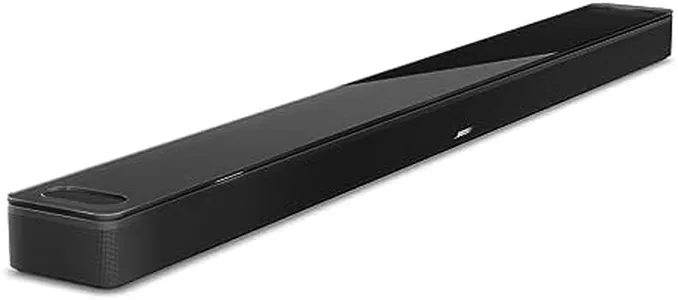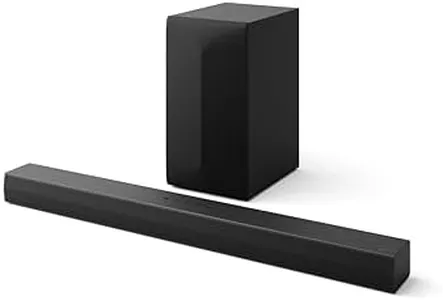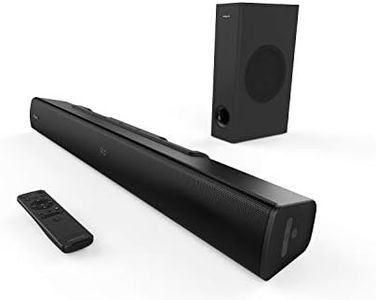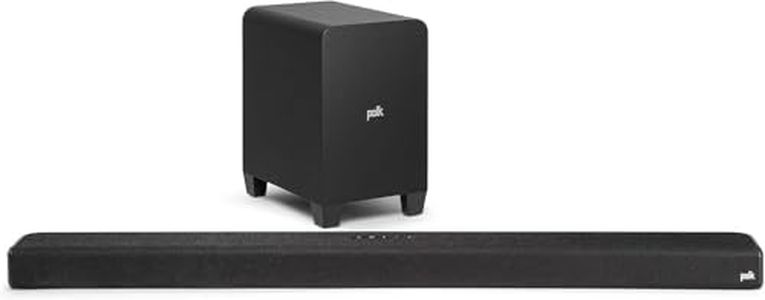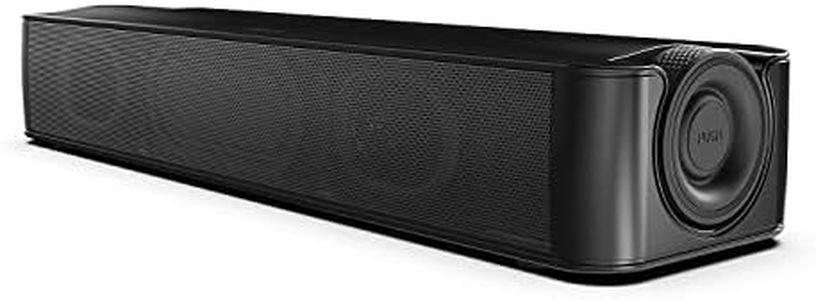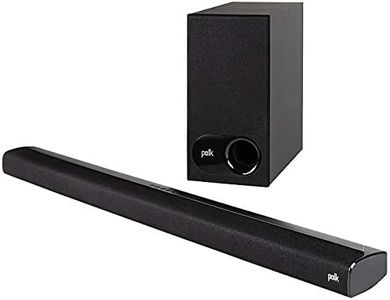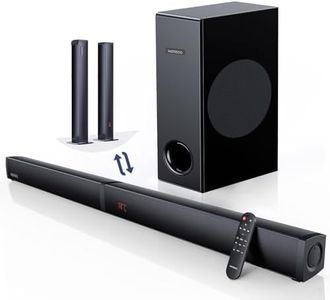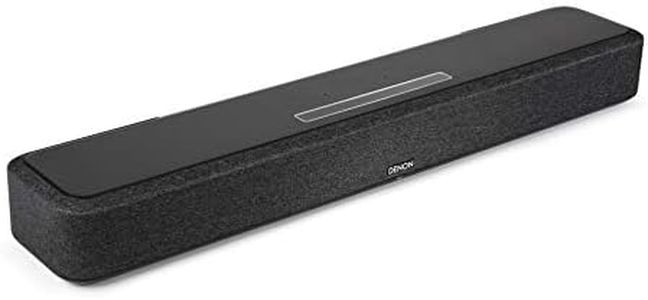We Use CookiesWe use cookies to enhance the security, performance,
functionality and for analytical and promotional activities. By continuing to browse this site you
are agreeing to our privacy policy
10 Best Bluetooth Soundbars
From leading brands and best sellers available on the web.By clicking on a link to a third party's website, log data is shared with that third party.
Buying Guide for the Best Bluetooth Soundbars
When choosing a Bluetooth soundbar, it's important to consider how and where you'll use it—are you looking for better TV sound, something for playing music, or both? Understanding your room size, source devices, and personal preferences for sound quality and connectivity will help you find the right fit. Take time to learn about the most relevant features and how they match your needs.Sound Quality (Channels and Wattage)Sound quality in Bluetooth soundbars is influenced by the number of channels (like 2.0, 2.1, 5.1) and the power output, often measured in watts. Channels refer to the number of separate audio outputs—more channels (like 5.1) provide a surround sound effect, while fewer channels (like 2.0 or 2.1) are simpler but still enhance your TV sound. Wattage tells you how powerful the soundbar is; higher wattage can mean louder sound and better performance in larger rooms, but for small spaces, a lower wattage might be enough. Think about your room size and what you like to listen to—if you want impactful movie sound, more channels and wattage is better; for casual TV watching, fewer channels suffice.
Bluetooth VersionThe Bluetooth version shows how up-to-date the wireless technology in the soundbar is. Newer versions (like 5.0 and above) usually offer better range, more stable connections, and sometimes improved energy efficiency. Older Bluetooth versions might result in more interruptions or shorter connection ranges. If you want a soundbar you can position far from your device, or have the most stable and quick connection, pick one with the latest Bluetooth version. For short-distance use, almost any version will do.
Connectivity OptionsWhile Bluetooth is crucial for wireless streaming, soundbars often provide other inputs, like HDMI ARC, optical, AUX, or USB. HDMI ARC is excellent for those who want to use the soundbar as their main TV speaker with easy volume and power control. Optical and AUX are handy for older TVs or devices. More connectivity options mean your soundbar can work with wider devices and offer flexibility as your setup changes. Consider your TV and other gadgets; choose a soundbar with the connections that match them for hassle-free use.
Size and DesignThe physical size and design of a Bluetooth soundbar affect both the look and the audio experience. Bigger soundbars can house larger or more powerful speakers, often resulting in richer sound, but they may not fit under all TVs or in every room. Compact models are less intrusive and fit better in smaller spaces or on crowded shelves. Pick a design and size that complements your room and doesn’t block your TV or feel overwhelming.
Subwoofer (Built-in or External)A subwoofer is the part of a sound system that handles deep bass. Some soundbars come with a separate (external) subwoofer, while others have bass drivers built in. External subwoofers usually deliver stronger, more immersive bass, which movie lovers and music fans might appreciate. Built-in bass is more convenient and space-saving, though less powerful. Think about your space and whether you value deeper bass or a simpler, all-in-one setup.
Ease of Use (Remote, App, Voice Control)Some Bluetooth soundbars come with features that make them easier to use, such as a dedicated remote control, a mobile app, or even voice assistant compatibility. Remotes offer straightforward control, while apps can let you adjust settings or update firmware from your phone. Voice control is handy for hands-free operation. If you want convenience or have specific accessibility needs, look for soundbars with the control options that match your preferences.
